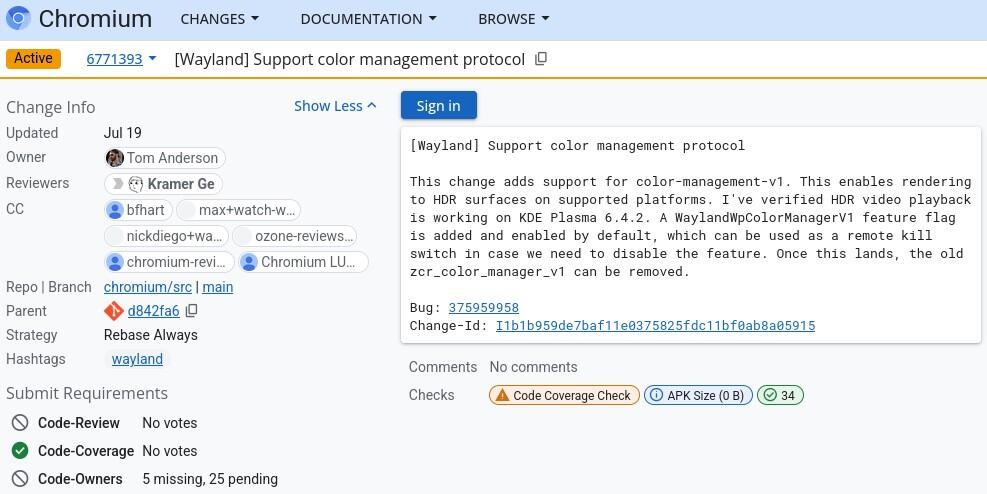Big news for Linux users—Chromium has just taken a major step, as the browser now supports the color-management-v1 protocol for Wayland, which means smoother, more vibrant HDR video playback on compatible setups.
For those unfamiliar, color-management-v1 is a Wayland protocol that enables apps to label the exact color/HDR format of what they draw and learn a monitor’s capabilities, allowing the compositor to map colors and tone accurately instead of guessing.
The change, which recently landed in Chromium’s codebase, enables proper rendering on HDR surfaces —a feature that has been a long time coming for Wayland users. Early testing shows it’s already working on KDE Plasma 6.4.2, so if you’ve got an HDR-capable display, you might finally start seeing those deeper blacks and brighter highlights in supported videos.

Now, here’s the kicker: Chromium’s added a feature flag—WaylandWpColorManagerV1—turned on by default. That’s essentially a safety net, allowing developers to disable the feature remotely if something goes awry. And once this new protocol settles in, the older zcr_color_manager_v1 will be phased out, cleaning things up under the hood.
As you can imagine, this is a significant development for Linux enthusiasts who have been waiting for improved HDR support in browsers. Sure, there’s still work to be done—Wayland adoption isn’t universal, and not all distros or desktop environments are equally prepped for HDR—but it’s a solid step in the right direction.
